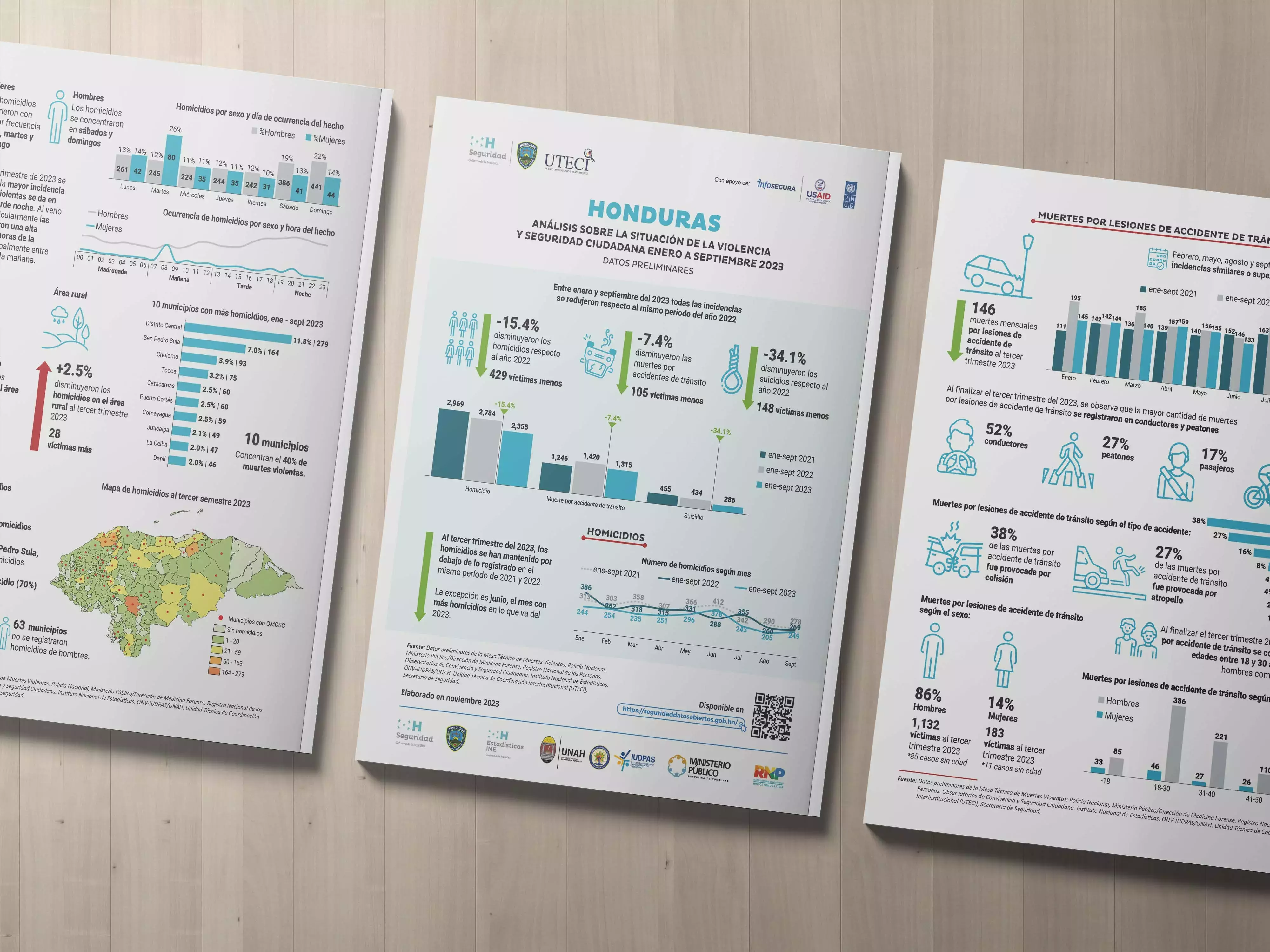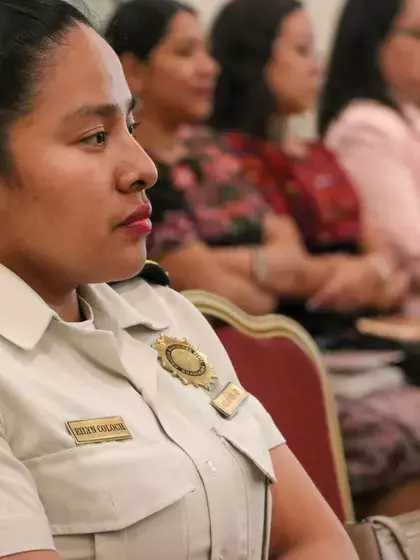Analysis of the state of the violence and citizen security January to September 2023

According to preliminary data, between January and September 2023 incidence was lower in all offences with regard to the same period in 2022. Homicides exhibited a 15.4 per cent reduction (429 fewer victims),traffic-related accidents a 7.4 per cent reduction (105 fewer victims) and suicides the greatest reduction at 34.1 per cent (148 fewer victims).
In January–September 2023, 87 per cent of homicides involved men, and this fell 20.1 per cent (513 fewer victims), while violent deaths of women at 13 per cent, rose 37 per cent (83 more victims) as compared to the first quarter in 2022. The percentage of homicides of women that took place in public was higher (79%); nonetheless, a greater percentage of violent deaths of women took place in the private sphere (21%) as compared to men (9%).
Young people age 18 to 30 remain the main victims of homicide, that is 37 per cent of all victims (871 total victims); however, this was a 21.95 per cent reduction (245 fewer victims) with regard to the same period in 2022. Firearms are still the weapon most used in homicides in Honduras,reaching 75.9 per cent in the case of men and 67.9 per cent in women.
Ten municipalities accounted for 40 per cent of violent deaths, with the municipalities of Distrito Central and San Pedro Sula showing the highest homicide percentage. Note that 63 municipalities had no records of homicides of men and in 199 municipalities there were no records of violent deaths of women.
In the first quarter of 2023, most traffic-injury related deaths involved drivers at 52 per cent, and pedestrians at 27 per cent. Suicide victims were mainly male in 81 per cent of cases (232 victims) and female in 19 per cent of cases (54 victims). The 18 to 30 age group was the most affected.
This analysis is the outcome of strategic coordination between the Secretariat for Security /Technical Inter-Institutional Coordination Unit (UTECI) and national institutions that produce information on citizen security,1 with the support of the United Nations Development Programme (UNDP) and the United States Agency for International Development (USAID) through the InfoSegura Regional Project to reinforce capacities to develop gender-responsive evidence-based public policies with a significant prevention component, based on quality, consensus-based and transparent official evidence provided by the country.
Preliminary data to date can be accessed on the website: www.seguridaddatosabiertos.gob.hn, as well as third quarter information from January to September 2023; data is updated as per verification by the responsible agencies and fieldwork by the technicians of the Technical Inter-Institutional Coordination Unit (UTECI) of the Secretariat for Security of Honduras.
View the full third-quarter analysis from January to September 2023
Source: Preliminary data provided by Working Group on Violent Deaths: National Police, Public Ministry/Directorate of Forensic Medicine. National Registry of Persons. Citizen Coexistence and Security Observatories. National Statistics Institute. IUDPAS/UNAH. Technical Inter-Institutional Coordination Unit (UTECI) Secretariat for Security.





